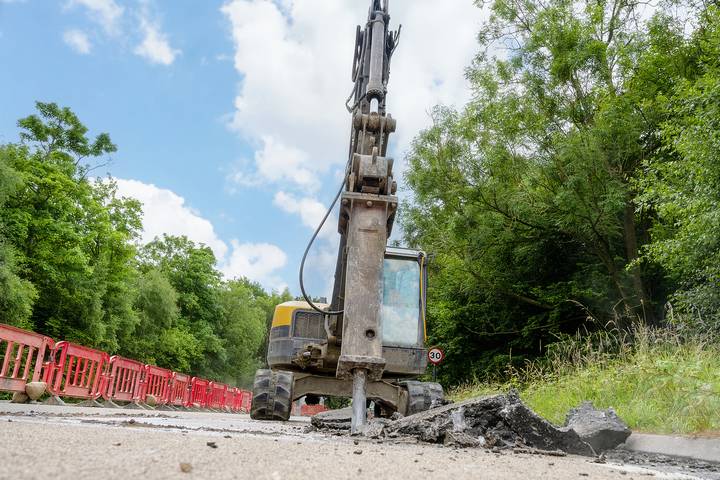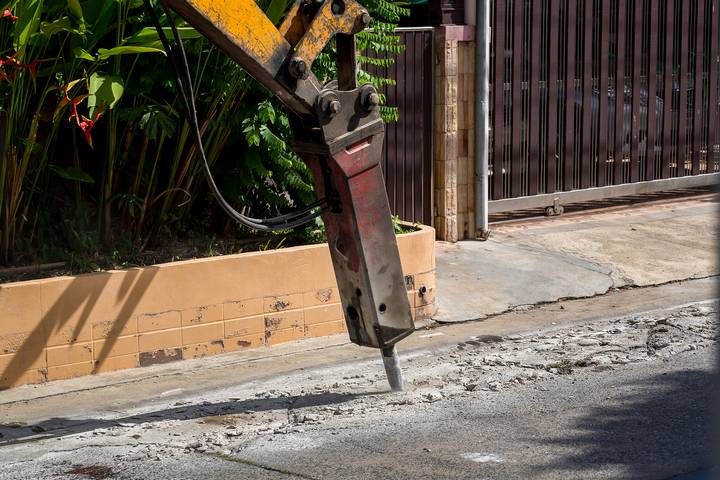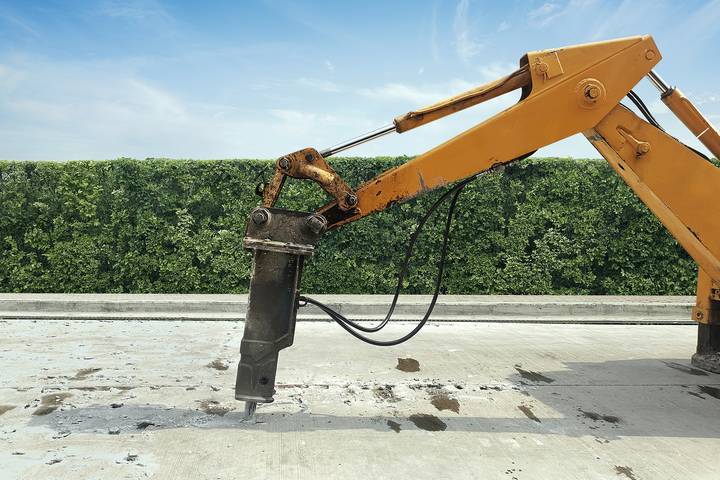How Does a Hydraulic Breaker Work?
4 min read
A hydraulic breaker (hammer) is a popular mechanical equipment used for construction, crushing stones, mining, and other complex duties. Many prefer this equipment for its high energy and because it produces insignificant noise when in operation. A hydraulic breaker is much more potent than any hand-held hammer, with its power increasing in size, technology, and model.
There is a breakdown of how a hydraulic breaker works alongside safety practices to observe. If you adhere to the above details, you’ll likely be working the equipment like an expert in no time. However, practical training remains essential for a better understanding.
You will be fascinated more about the equipment when you learn how it works in this blog.
History of the Hydraulic Breaker

The first hydraulic breaker dates back to the 1960s as an invention by a German company, Krupp (modern Atlas Copco). This machine is among the oldest hydraulic attachments for a carrier.
The Germans probably saw the high energy required to crush large stones or surfaces with hand-held hammers and invented hydraulic breakers. With over 60 years of application, hydraulic breakers have experienced various advancements, including automation, less sound and vibration, and self-lubrication.
Hydraulic Breaker Parts

To understand how a hydraulic breaker works, it’s essential first to learn its main parts and their application.
Hydraulic cylinder
This is the main part that does the hammering job. A hydraulic cylinder has a piston that goes up and down to hammer the surface when pressure is applied. Cylinder housing is the part that protects the cylinder and its internal components.
Hydraulic hose
This component delivers the hydraulic fluid to the breaker to power the breakers. With enough fluid, the chisel (the pointed part) breaks the material into smaller pieces.
Hydraulic valve
The valve controls how much hydraulic fluid flows to the cylinder, leading to uniformity in the breaking process. A nitrogen accumulator is used to calm down the hydraulic pressure whenever it fluctuates.
Front head
The front head links the hydraulic breaker to the excavator, while buffer plates act as shock absorbers to minimize damage to the hammer. Nuts and bolts help to secure the breaker and may need occasional maintenance.
How Does a Hydraulic Breaker Work?

Here is how a hydraulic breaker works:
Operation
Operating technical equipment can be challenging and requires adequate training both theoretically and physically. This blog will theoretically explain how a hydraulic breaker works to make the practical more manageable. A hydraulic breaker works through hydraulic power, using pressurized fluids like oil.
Hammer
A hydraulic hammer doesn’t work independently but is linked to an excavator or other heavy equipment. The excavator driver operates the hammer from the vehicle through different commands and general knowledge. Putting the excavator on paves the way to start the hydraulic system and work the breaker.
Piston & Chisel
The above parts of a hydraulic breaker work together to deliver the task. Starting the hydraulic system causes the piston and chisel to move with the power of the pressurized hydraulic oil. The accumulator releases oil to the piston chamber as it moves up and down gradually to hammer the surface. The greater the energy impact, the more oil is releases until the maximum level.
Control
The hydraulic breaker is at work but needs the driver’s control to operate satisfactorily. The chisel and piston move continuously, breaking the material in the direction commanded by the driver. You can also adjust the striking frequency, ensuring it doesn’t exceed the maximum.
Debris
The process of breaking can continue until the chosen area has been covered or according to the driver’s preference. When the job is done, you can notice a pile of debris from the materials broken by the hammer. The next step is to clear the debris through a bucketed excavator or manually by shovel and wheelbarrow.
Safety Measures When Working a Hydraulic Breaker

Safety remains paramount when handling a hydraulic breaker to avoid accidents like any other mechanical equipment. First, a hydraulic breaker should strictly be operated by well-trained professionals who understand the components and controls best. Furthermore, you should have protective gear like helmets, ear protection, gloves, and eye shields during operation.
Another critical safety practice when handling a hydraulic breaker is to inspect the machine before every use. Even better, scheduling regular professional inspections of the entire equipment would help to keep accidents at bay and enhance its performance. Other people or pets should avoid an operation area to prevent injuries from flying materials.
Ensure to follow the manufacturer’s guide regarding operating a breaker for more safety. Experts advise examining if the prevailing weather conditions fit hydraulic breaking while ensuring the operation meets local regulations and restrictions.
If you detect any problem with the breaker, it’s best to stop operating and report it to a professional for further inspection. Lastly, you should maintain high concentration and a stable position when working the breaker.